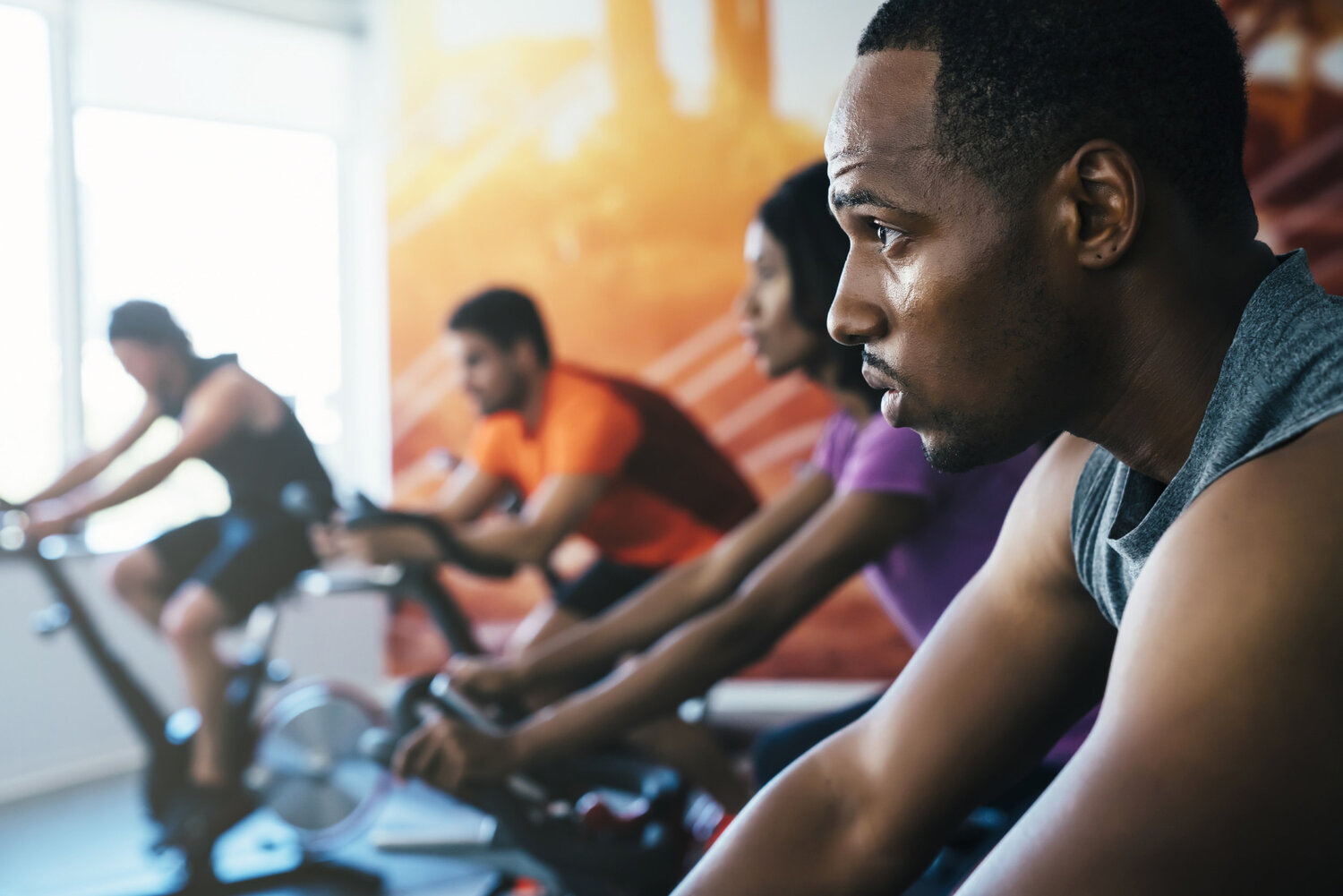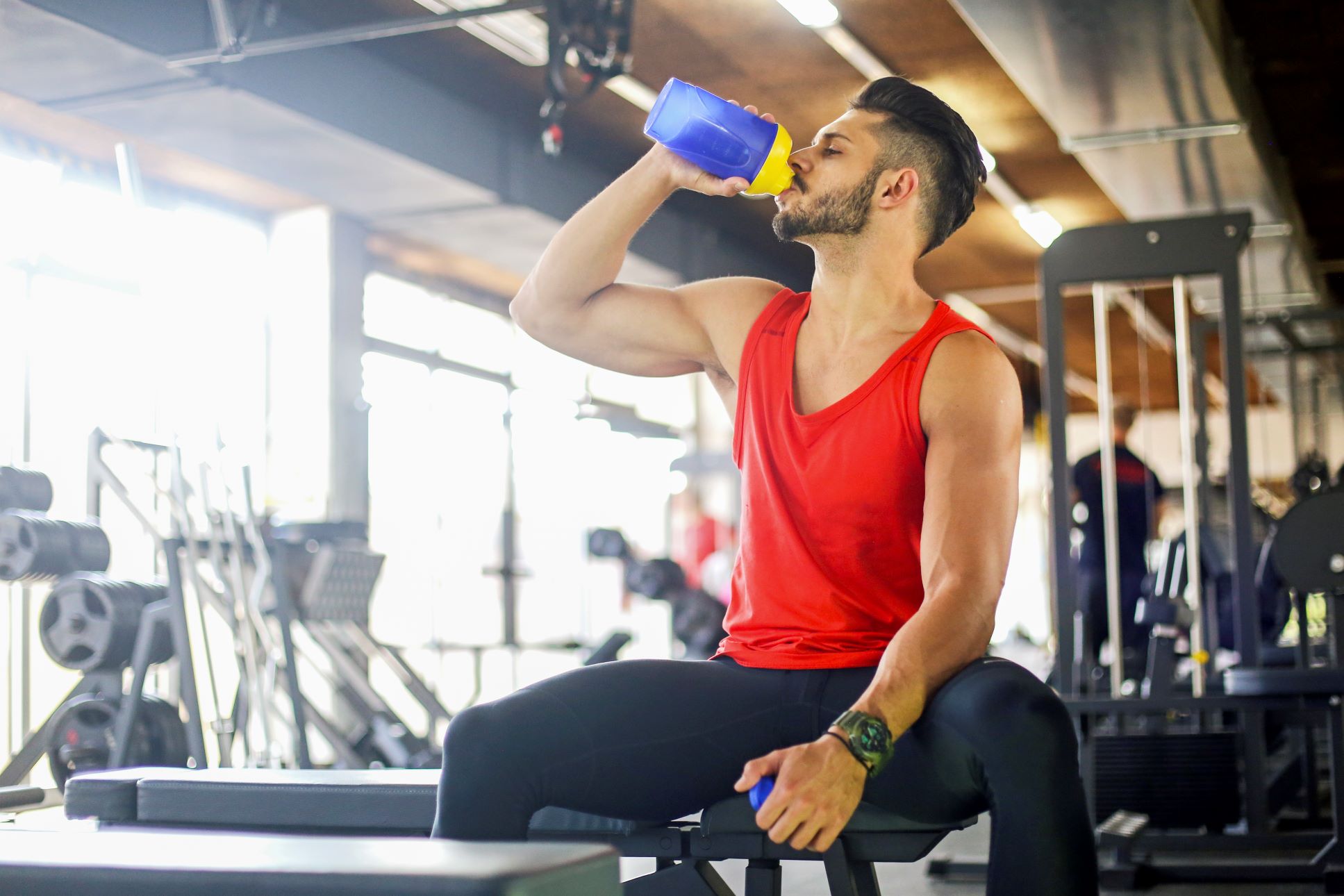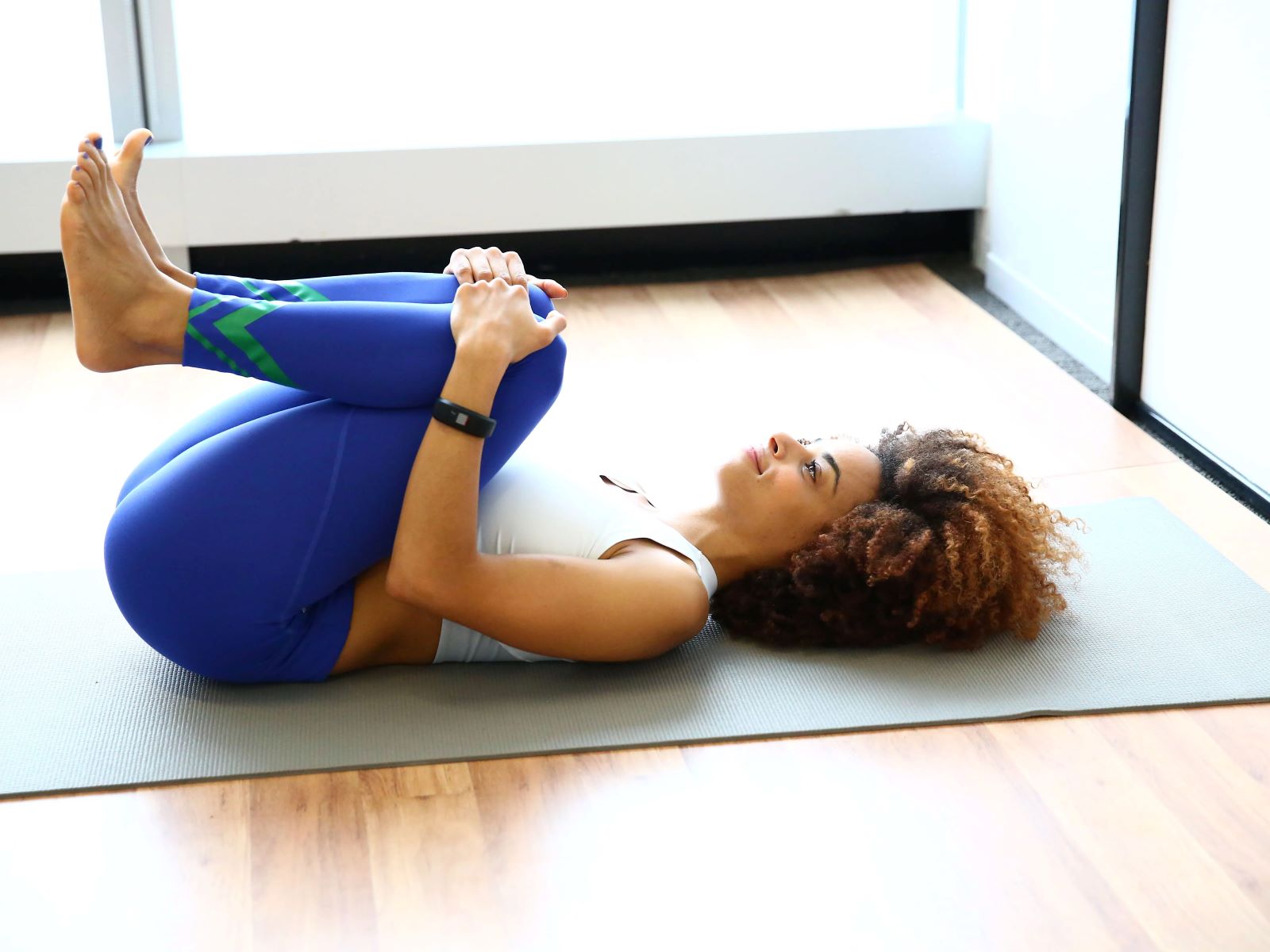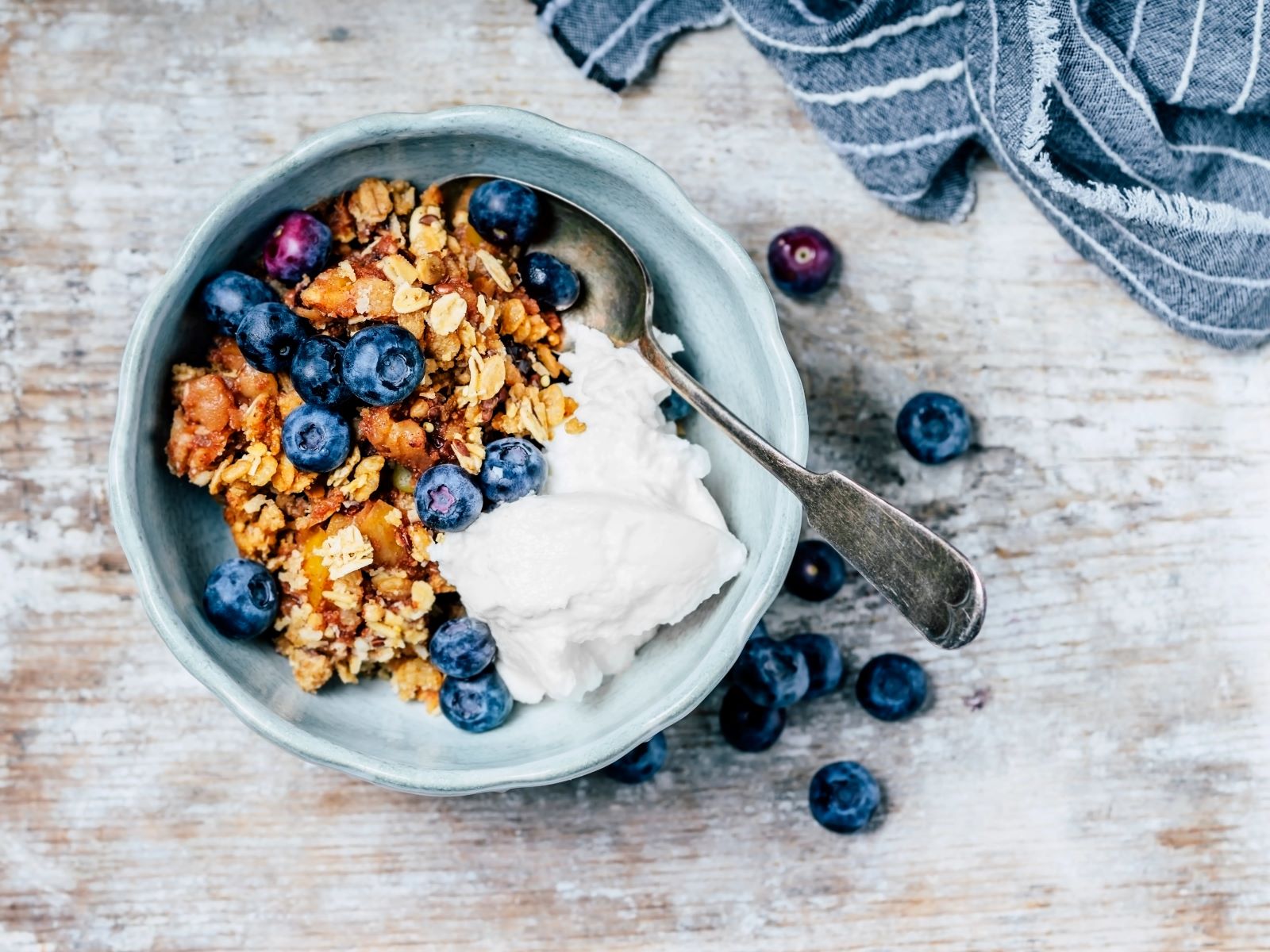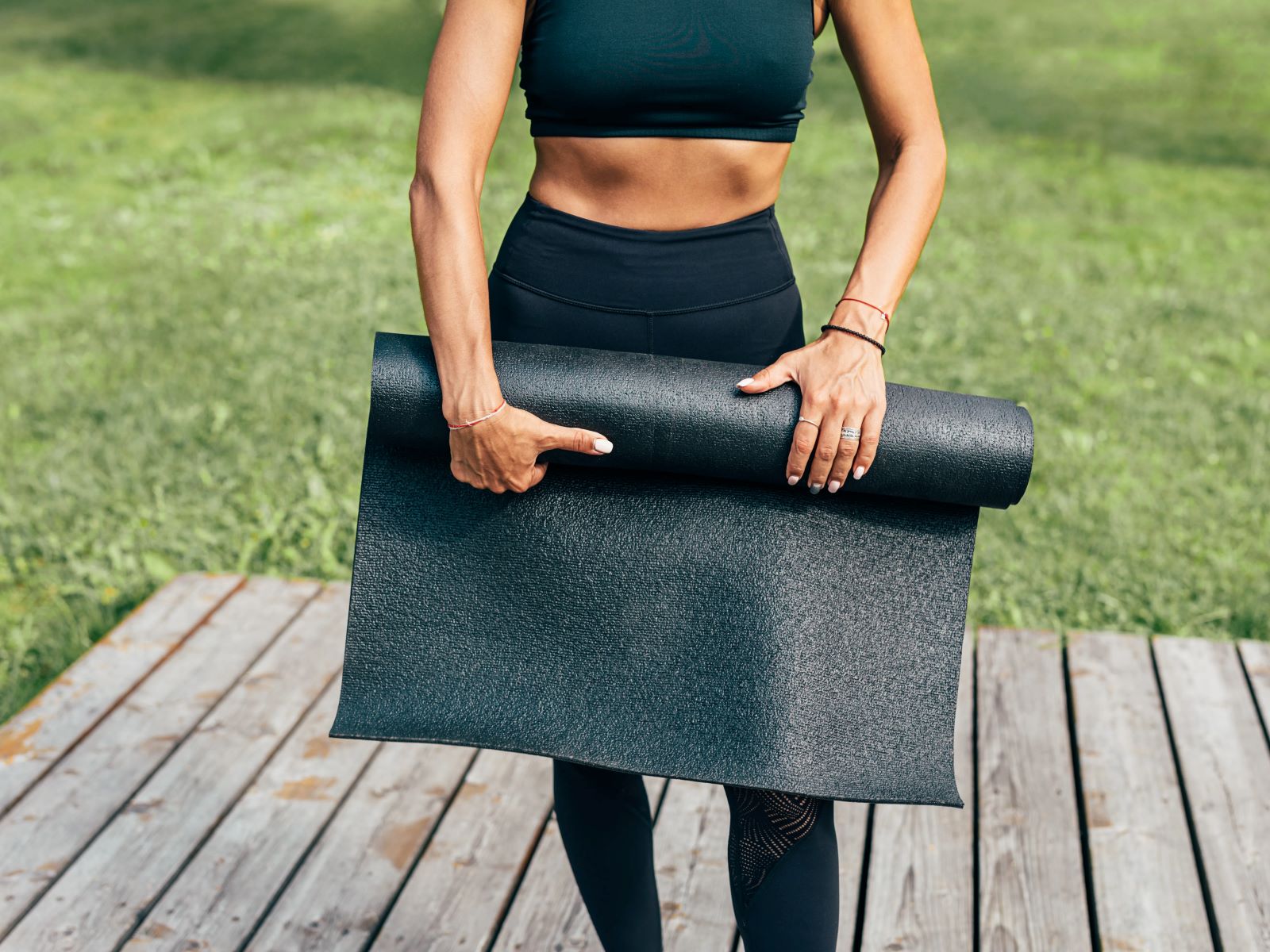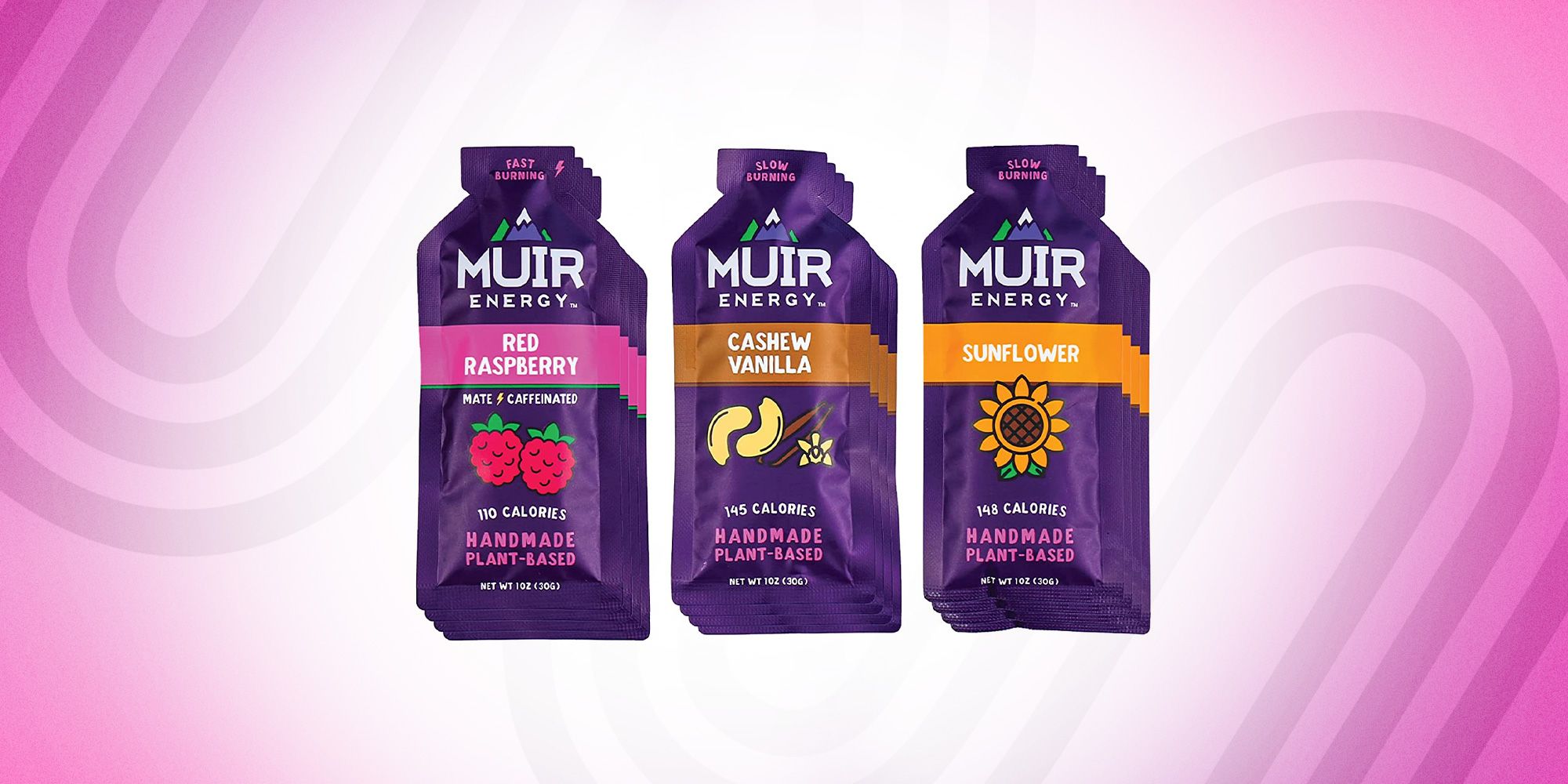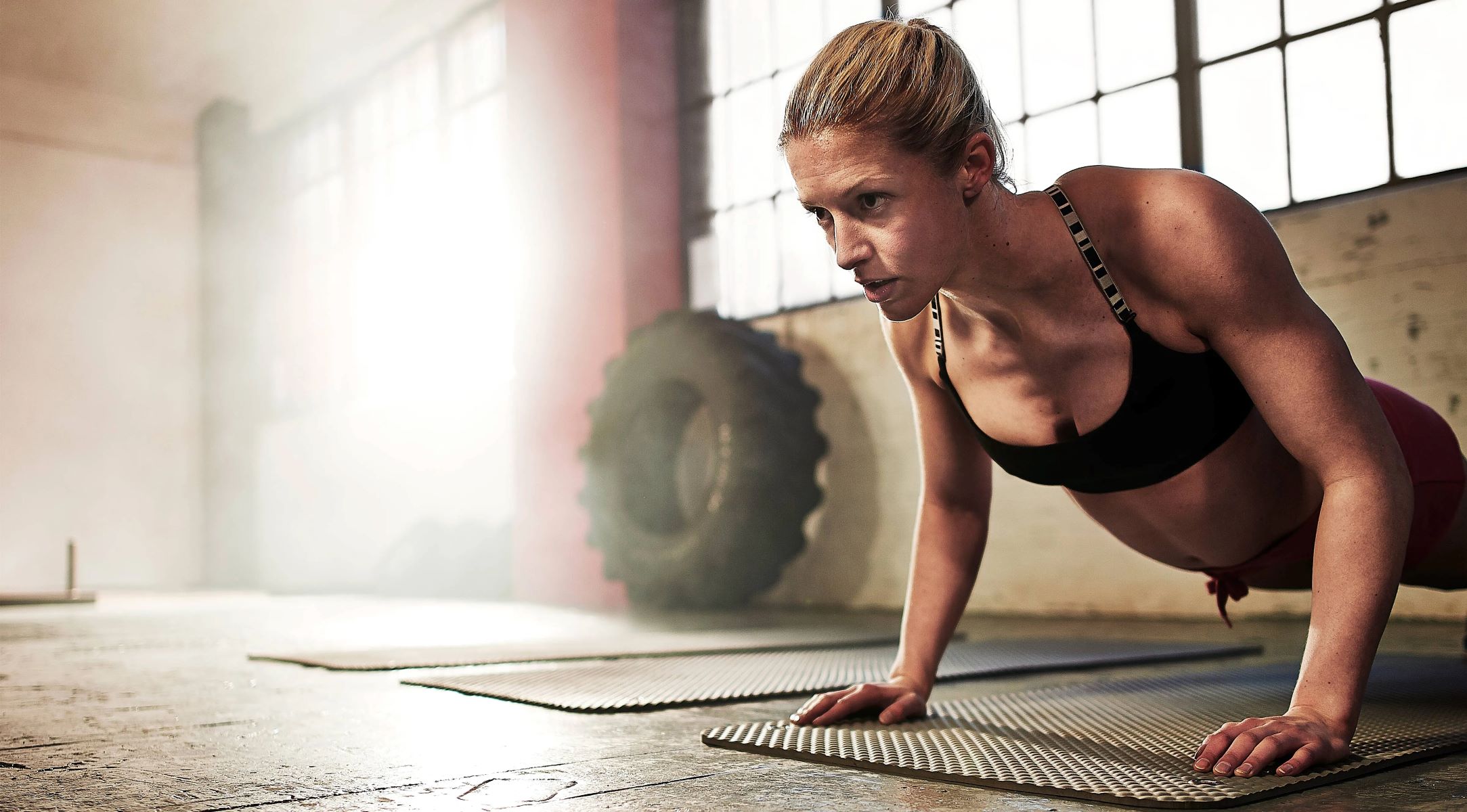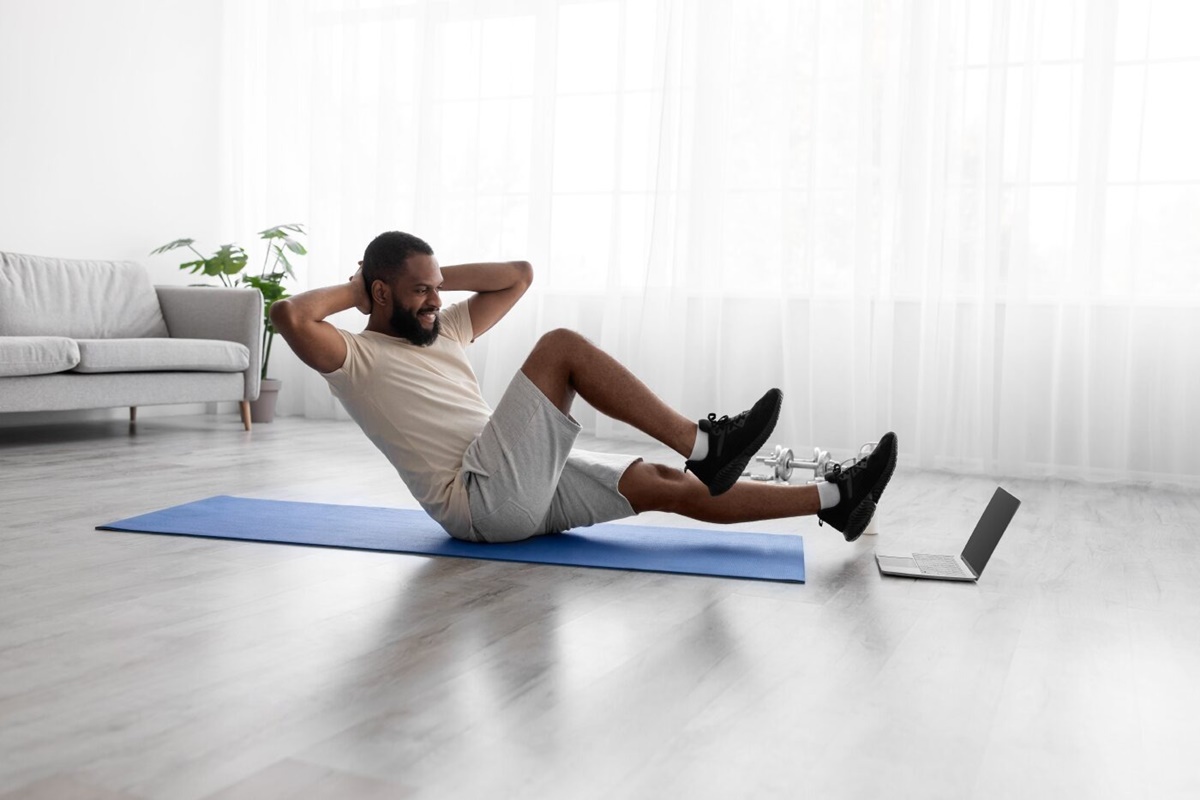

Featured
What Is The Best Exercise
Modified: January 22, 2024
Discover the best exercises to stay fit and healthy. Our featured exercises are designed to help you achieve your fitness goals.
Introduction
Exercise is an essential component of a healthy lifestyle. It not only helps in maintaining physical fitness but also contributes to mental well-being. Regardless of age or fitness level, incorporating exercise into your daily routine can have numerous benefits. From improving cardiovascular health to boosting mood and increasing energy levels, the advantages of exercise are undeniable.
Regular exercise is crucial for maintaining a healthy weight, reducing the risk of chronic diseases such as heart disease and diabetes, and enhancing overall quality of life. Engaging in physical activities also strengthens the immune system, improves cognitive function, and promotes better sleep patterns.
Choosing the right exercise for your needs and preferences can be a daunting task, given the wide range of options available. Some people may prefer high-intensity workouts that get their heart pumping, while others may enjoy more low-impact activities that focus on strength and flexibility. The key is to find an exercise routine that you enjoy and that fits into your lifestyle.
In this article, we will explore the various types of exercises available and the benefits they offer. Whether you are a beginner or an experienced fitness enthusiast, this guide will provide you with valuable insights to help you make informed choices about the best exercises for your body and goals.
The Benefits of Exercise
Regular exercise offers a wide range of benefits for both our physical and mental health. Let’s delve into some of the key advantages:
- Improved Physical Health: Engaging in exercise on a regular basis helps strengthen muscles, improve joint flexibility, and enhance overall physical performance. It can also reduce the risk of chronic diseases such as heart disease, diabetes, and certain types of cancer.
- Weight Management: Exercise plays a crucial role in achieving and maintaining a healthy weight. It helps burn calories, increase metabolism, and build lean muscle mass. Combining exercise with a balanced diet can lead to successful weight loss and weight maintenance.
- Cardiovascular Health: Aerobic exercises, such as running, swimming, and cycling, effectively improve cardiovascular health. These activities strengthen the heart, boost lung capacity, and improve blood circulation, reducing the risk of heart disease, stroke, and high blood pressure.
- Mental Well-being: Exercise is not only beneficial for the body but also for the mind. It promotes the release of endorphins, also known as “feel-good” hormones, which help reduce stress, anxiety, and symptoms of depression. Regular exercise can also enhance cognitive function and improve memory and concentration.
- Increased Energy Levels: When we engage in physical activity, our bodies release energy-boosting hormones. Regular exercise helps improve stamina and endurance, making us feel more energetic and productive throughout the day.
- Better Sleep: Physical activity can aid in improving sleep quality. Regular exercise promotes relaxation and reduces insomnia. However, it is important to avoid intense workouts close to bedtime to ensure a good night’s sleep.
It is essential to note that the benefits of exercise are not limited to the ones mentioned above. Various studies have shown that exercise can also boost immune function, improve bone density, increase flexibility, and promote a healthy aging process.
Factors to Consider when Choosing an Exercise
With countless exercise options available, it’s important to consider several factors to ensure you choose the right activities for your needs and preferences. Here are some key factors to take into account:
- Health and Fitness Level: Assess your current health and fitness level before selecting an exercise. If you have any pre-existing medical conditions or injuries, consult with a healthcare professional for guidance on which exercises are safe and suitable for you. Additionally, consider your strength, endurance, and flexibility when choosing activities.
- Goals and Objectives: Clarify your fitness goals to determine which exercises align with them. For example, if your goal is to lose weight, cardio-based activities such as jogging or cycling may be more appropriate. If your aim is to build strength and muscle, consider incorporating strength training exercises into your routine.
- Interest and Enjoyment: Find exercises that you genuinely enjoy, as this increases the likelihood of sticking to them long-term. Explore different activities, such as dancing, hiking, swimming, or team sports, until you find something that sparks your interest and keeps you motivated.
- Time Availability: Consider the time you can dedicate to exercise each day or week. Some activities may require more time commitment than others. If you have a busy schedule, look for exercises that can be done in shorter bursts, such as high-intensity interval training (HIIT) workouts.
- Accessibility: Determine the accessibility of the chosen exercise. Are there facilities or equipment available nearby? Can you easily incorporate the exercise into your daily routine? Select exercises that are convenient and accessible to ensure consistency.
- Social Interaction: If you enjoy socializing or working out with others, consider activities that offer a social component. Joining a sports team or group fitness classes can provide social support and make exercising more enjoyable.
- Variety and Cross-Training: Incorporate a variety of exercises into your routine to target different muscle groups and prevent boredom. Cross-training, which involves participating in multiple types of activities, can help improve overall fitness, prevent injuries, and provide mental stimulation.
Remember that what works for one person may not work for another. It’s important to listen to your body, respect your limits, and make adjustments as needed. Experiment with different exercises and find the right combination that meets your goals, preferences, and lifestyle.
Cardiovascular Exercises
Cardiovascular exercises, also known as cardio or aerobic exercises, are activities that increase the heart rate and improve overall cardiovascular fitness. These exercises help strengthen the heart, lungs, and circulatory system. They are vital for maintaining heart health, burning calories, and improving endurance.
Here are some popular cardiovascular exercises:
- Running: Running is a high-impact and effective cardio exercise that can be done outdoors or on a treadmill. It helps burn calories, increases endurance, and strengthens leg muscles.
- Cycling: Cycling is a low-impact exercise that provides cardiovascular benefits while being easy on the joints. It can be done on a stationary bike or outdoors on a road or mountain bike.
- Swimming: Swimming is a whole-body workout that engages various muscle groups. It is a low-impact exercise that is gentle on the joints and is suitable for individuals of all fitness levels.
- Jumping Rope: Jumping rope is a simple and affordable exercise that can be done virtually anywhere. It improves cardiovascular fitness, coordination, and agility.
- Dancing: Dancing is a fun and enjoyable cardiovascular exercise that can be done alone or in a group. It increases heart rate, improves coordination, and boosts mood.
- Rowing: Rowing is a full-body exercise that engages the upper and lower body muscles. It provides a great cardiovascular workout and helps improve strength and endurance.
- High-Intensity Interval Training (HIIT): HIIT workouts involve short bursts of intense exercise followed by periods of rest or low-intensity exercise. This type of training is known to improve cardiovascular fitness and burn calories efficiently.
It is recommended to perform moderate-intensity cardiovascular exercises for at least 150 minutes per week, or vigorous-intensity exercises for at least 75 minutes per week, depending on your fitness level and goals. Remember to warm up before starting any cardio activity and gradually increase intensity over time.
Cardiovascular exercises can be modified to suit different fitness levels, making them accessible to individuals of all ages and abilities. Consistency is key when it comes to reaping the benefits of cardiovascular exercises. Find activities that you enjoy and incorporate them into your routine to improve your cardiovascular health and overall fitness.
Strength Training Exercises
Strength training exercises, also known as resistance or weight training, focus on building muscle strength, increasing bone density, and improving overall body composition. These exercises involve working against resistance, either using weights, resistance bands, or bodyweight.
Here are some popular strength training exercises:
- Weightlifting: Weightlifting involves using barbells, dumbbells, or machines to target specific muscle groups. It helps build muscle mass, improve strength, and increase bone density.
- Bodyweight Exercises: Bodyweight exercises use the weight of your own body to provide resistance. Examples include push-ups, squats, lunges, and planks. These exercises can be done anywhere and are effective for building strength and endurance.
- Resistance Band Exercises: Resistance bands are versatile and portable, making them perfect for strength training at home or while traveling. They provide varying levels of resistance and can target different muscle groups.
- Pilates: Pilates is a low-impact strength training method that focuses on core strength, flexibility, and body alignment. It uses controlled movements and emphasizes proper breathing techniques.
- Yoga: Yoga incorporates strength-building poses that require stability and balance. It helps improve flexibility, increase muscle tone, and promote relaxation and stress reduction.
- Circuit Training: Circuit training combines strength training exercises with cardiovascular intervals. It involves moving from one exercise to another with minimal rest, providing both strength and cardiovascular benefits.
- Functional Training: Functional training mimics everyday movements and engages multiple muscle groups simultaneously. It helps improve coordination, balance, and overall body strength.
When performing strength training exercises, it’s important to use proper form and start with manageable weights or resistance. Gradually increase the intensity as your muscles adapt and become stronger. Allow for adequate rest and recovery between sessions to prevent overtraining and reduce the risk of injury.
Strength training exercises should be incorporated into your exercise routine at least two to three times per week, targeting different muscle groups for a well-rounded workout. Whether you choose to work out at a gym or in the comfort of your own home, strength training can help improve your muscle tone, increase your metabolism, and enhance your overall physical performance.
Flexibility and Stretching Exercises
Flexibility and stretching exercises aid in improving joint mobility, muscle elasticity, and overall range of motion. They play a vital role in preventing injuries, reducing muscle soreness, and improving posture. Incorporating flexibility exercises into your fitness routine can help enhance athletic performance and promote better functional movement.
Here are some popular flexibility and stretching exercises:
- Static Stretching: Static stretching involves holding a stretch for a prolonged period, focusing on lengthening and relaxing the targeted muscles. Examples include reaching for your toes to stretch your hamstrings or pulling your shoulder across your body to stretch your deltoids.
- Dynamic Stretching: Dynamic stretching involves moving through a range of motion gradually and repeatedly to increase flexibility and prepare the body for physical activity. Examples include arm circles, walking lunges with a twist, or leg swings.
- Yoga: Yoga combines stretching, strengthening, and breath control to improve flexibility, balance, and mental focus. Various yoga poses, such as downward-facing dog, warrior poses, and seated forward bends, target different muscle groups and promote overall flexibility.
- Pilates: Pilates exercises focus on strengthening the core while simultaneously working on flexibility and alignment. Movements promoting spinal articulation and pelvic stability, such as the cat-camel stretch and the pelvic tilt, enhance overall flexibility.
- Foam Rolling: Foam rolling, also known as self-myofascial release, uses a foam roller to apply pressure to the muscles, releasing tension and improving flexibility. It can help alleviate muscle knots and tightness in various areas of the body.
- Active Isolated Stretching: Active isolated stretching involves holding a stretch for a short duration, around 1-2 seconds, and then releasing. It focuses on specific muscle groups and can enhance flexibility by promoting muscle lengthening.
- Tai Chi: Tai Chi is a martial art that incorporates slow, flowing movements and deep breathing. It improves balance, flexibility, coordination, and relaxation.
When performing flexibility exercises, remember to warm up your muscles beforehand to prevent injuries. Incorporate stretching into your routine after completing cardiovascular or strength training exercises when your muscles are warm and more pliable.
It’s important to listen to your body and never force a stretch beyond your comfort zone. Stretching should feel gentle and should not cause pain. Aim to stretch all major muscle groups, focusing on areas that feel tight or restricted. Over time, consistent stretching can lead to improved flexibility, increased joint mobility, and a greater sense of ease in your movements.
Combining Different Types of Exercises
Combining different types of exercises in your fitness routine can maximize the benefits and keep your workouts engaging and effective. By incorporating cardio, strength training, and flexibility exercises, you can achieve a well-rounded and balanced approach to fitness.
Here are some reasons why combining different types of exercises is beneficial:
- Improved Overall Fitness: Each type of exercise targets different aspects of fitness. Cardiovascular exercises increase heart health and endurance, strength training builds muscle strength and bone density, and flexibility exercises improve joint mobility and range of motion. By incorporating all three, you can enhance your overall fitness level and maintain a well-functioning body.
- Enhanced Weight Loss: Combining cardio exercises, such as running or cycling, with strength training activities helps burn calories and build lean muscle mass. Muscle tissue burns more calories at rest than fat tissue, so increasing muscle mass through strength training can boost your metabolism and aid in weight loss.
- Better Body Composition: Cardio exercises help burn fat, while strength training exercises help shape and tone muscles. By combining both, you can improve your body composition by decreasing body fat percentage and increasing muscle definition.
- Increased Performance: Combining different exercises can improve performance in various activities or sports. For example, cardio exercises enhance endurance and stamina, strength training improves strength and power, and flexibility exercises help prevent injuries and improve overall mobility and agility.
- Prevents Plateau and Boredom: Regularly switching up your exercise routine can prevent plateaus and keep you motivated. Your body adapts to repetitive exercises over time, leading to diminished results. By incorporating a variety of exercises, you challenge different muscle groups and keep your workout routine interesting and enjoyable.
When combining exercises, consider your goals and fitness level. Design a well-balanced routine that includes a mix of cardio, strength training, and flexibility exercises. You can alternate between different activities throughout the week or even within a single workout session. For example, start with a cardio warm-up, move on to strength training exercises, and finish with a cool-down consisting of stretching or yoga poses.
Remember to listen to your body, allow for proper rest and recovery, and gradually increase the intensity and duration of your workouts. It’s also important to consult with a fitness professional or trainer if you are new to exercise or have specific health concerns.
By combining different types of exercises, you can optimize your fitness journey and achieve a well-rounded level of health and wellness.
Exercise Equipment and Accessories
Exercise equipment and accessories can enhance your workout routines, provide additional support, and add variety to your exercises. Whether you prefer working out at home, in a gym, or outdoors, incorporating the right equipment and accessories can help you achieve your fitness goals more effectively.
Here are some commonly used exercise equipment and accessories:
- Free Weights: Dumbbells, barbells, and kettlebells are versatile tools for strength training. They allow for a wide range of exercises targeting different muscle groups.
- Resistance Bands: Resistance bands provide a portable and affordable way to add resistance to your workouts. They come in different levels of resistance and can be used for strength training, stretching, and physical therapy exercises.
- Exercise Balls: Exercise balls, also known as stability balls, are beneficial for improving balance, core strength, and posture. They can be used for various exercises, including planks, squats, and abdominal workouts.
- Treadmill or Stationary Bike: Cardiovascular equipment such as treadmills or stationary bikes offers the convenience of indoor workouts. They allow you to engage in walking, running, or cycling activities regardless of the weather conditions.
- Yoga Mat: A yoga mat provides comfort and grip during floor exercises, stretching, and yoga sessions. It offers cushioning for your joints and prevents slips during poses and movements.
- Fitness Tracker: A fitness tracker, whether a wearable device or a smartphone app, can track your steps, heart rate, calories burned, and sleep patterns. It can help you monitor your progress and stay motivated towards your fitness goals.
- Jump Rope: Jumping rope is a simple yet effective and portable exercise tool for cardiovascular fitness and coordination. It can be used at home, in the gym, or even while traveling.
- Foam Roller: Foam rollers are used for self-myofascial release, targeting tight muscles and fascia. They assist in muscle recovery, prevent injury, and improve flexibility and mobility.
When selecting exercise equipment and accessories, consider your fitness goals, available space, and budget. Choose items that align with your preferred types of exercises and cater to your specific needs.
If you are unsure about using certain equipment or accessories, consult with a fitness professional or trainer to learn proper techniques and ensure safety during your workouts.
Remember that while equipment and accessories can be helpful, they are not necessary for achieving a successful workout. Bodyweight exercises and activities like walking or jogging require little to no equipment and can still provide excellent fitness benefits.
Ultimately, the key is to find the right balance of equipment and accessories that enhance your workouts, fit your lifestyle, and keep you motivated on your fitness journey.
Safety Tips during Exercise
While exercise is beneficial for overall health, it’s important to prioritize safety to prevent injuries and ensure a positive fitness experience. Here are some essential safety tips to keep in mind during exercise:
- Warm Up: Always start your workouts with a proper warm-up. A warm-up prepares your body for physical activity by increasing blood flow to the muscles and raising your body temperature. It can include light cardio exercises, dynamic stretches, and mobility exercises.
- Use Proper Form: Proper form is crucial to prevent injuries and get the most out of your exercises. If you’re unsure about the correct form, consider working with a fitness professional or trainer who can guide you through proper technique and alignment.
- Stay Hydrated: Drink plenty of water before, during, and after your workouts to stay hydrated. Dehydration can lead to fatigue, dizziness, and reduced exercise performance. Remember to listen to your body and drink water as needed.
- Wear Appropriate Attire: Choose comfortable and breathable workout clothes that allow for free movement. Wear supportive athletic shoes that fit properly and provide stability for your chosen activities. If necessary, consider using specific equipment or accessories, such as knee braces, weightlifting belts, or wrist wraps, for added support.
- Gradually Increase Intensity: Avoid sudden or drastic increases in exercise intensity or duration, especially if you are new to a particular type of exercise. Gradually progress and allow your body time to adapt to the demands of the workout. This helps prevent overexertion and reduces the risk of injury.
- Listen to Your Body: Pay attention to your body’s signals during exercise. If you feel pain, dizziness, or excessive fatigue, ease off or stop the activity. Pushing through pain or ignoring warning signs can lead to injuries. It’s important to distinguish between muscle fatigue and actual pain.
- Rest and Recovery: Allow for adequate rest and recovery between workouts. Your body needs time to repair and regenerate after intense exercise. Include rest days in your routine and consider incorporating activities such as stretching, yoga, or gentle walks on these days.
- Avoid Overtraining: Overtraining occurs when the body doesn’t have enough time to recover between workouts, leading to fatigue, decreased performance, and an increased risk of injury. Vary your workouts, listen to your body’s signals, and prioritize rest and recovery to avoid overtraining.
- Seek Professional Guidance: If you’re new to exercise or have specific health concerns, consult with a healthcare professional or a qualified fitness trainer. They can provide individualized advice, help create a safe and effective exercise plan, and address any specific concerns or limitations you may have.
- Be Mindful of the Environment: If exercising outdoors, be aware of the surroundings and take necessary precautions. Dress appropriately for the weather, use sunscreen to protect your skin, and stay hydrated. Be cautious of uneven terrain, traffic, or potential hazards, especially during activities such as running or cycling.
By incorporating these safety tips into your exercise routine, you can minimize the risk of injury and create a safe and enjoyable fitness experience.
Finding Motivation to Exercise
Staying motivated to exercise can sometimes be challenging, especially when life gets busy or results are not immediate. However, finding the right sources of motivation can help you stay consistent and committed to your fitness journey. Here are some effective strategies to find and maintain motivation to exercise:
- Set Realistic Goals: Set specific, achievable, and realistic goals that are meaningful to you. Whether it’s losing weight, gaining strength, or improving overall fitness, having clear objectives can give you something tangible to work towards and help keep you motivated.
- Create a Routine: Establish a regular exercise routine and make it a non-negotiable part of your day. Consistency is key, and having a set schedule can help make exercise a habit and eliminate the need for daily motivation.
- Find Activities You Enjoy: Explore different types of exercises and activities to find something that you genuinely enjoy. Whether it’s dancing, swimming, hiking, or playing a sport, engaging in activities you find fun and enjoyable can make it easier to stay motivated and look forward to your workouts.
- Join a Fitness Community: Find a supportive community of like-minded individuals who share your fitness goals. Joining a gym, taking group fitness classes, or participating in online fitness communities can provide accountability, support, and motivation on your fitness journey.
- Track Your Progress: Keep track of your progress to see how far you’ve come. This can be done through a workout journal, fitness app, or wearable device. Seeing improvements in strength, endurance, or even just the number of workouts completed can serve as a powerful motivator.
- Reward Yourself: Set up a system of rewards for reaching milestones or sticking to your exercise routine. Treat yourself to something you enjoy, like a spa day, a new workout outfit, or a delicious and healthy meal. Rewards can give you something to look forward to and reinforce positive behavior.
- Make It Social: Exercise with a friend or join group classes to make it a social activity. Exercising with others can make it more enjoyable, provide motivation, and help you stay accountable. You can also schedule regular workout dates with a friend to keep each other motivated and committed.
- Switch It Up: Avoid boredom by incorporating variety into your exercise routine. Try new activities, switch up your workouts, or challenge yourself with different goals. By constantly introducing fresh elements to your routine, you can keep it interesting and maintain motivation.
- Focus on the Benefits: Remind yourself of the numerous benefits of exercise, both physical and mental. Regular exercise enhances mood, boosts energy levels, reduces stress, improves sleep, and increases overall well-being. By focusing on the positive impact exercise has on your life, you can stay motivated to prioritize it.
- Stay Positive and Self-Compassionate: Avoid negative self-talk and embrace self-compassion throughout your fitness journey. Celebrate small victories, and if you miss a workout or have a setback, forgive yourself and move forward. Maintaining a positive mindset and being kind to yourself can help you stay motivated in the long run.
Remember, motivation can fluctuate, and that’s normal. It’s important to find strategies that work best for you and adapt them as needed. By staying motivated and consistent, you can reap the countless benefits of regular exercise and maintain a healthy, active lifestyle.
Conclusion
Exercise is an essential component of a healthy lifestyle, offering a wide range of physical and mental benefits. By incorporating various types of exercises, such as cardiovascular, strength training, and flexibility exercises, you can achieve a well-rounded fitness routine that targets different aspects of your health and wellness.
When choosing exercises, consider factors such as your fitness level, goals, interests, and time availability. Find activities that you enjoy and that fit into your lifestyle to increase the likelihood of sticking to your routine. Remember to prioritize safety by using proper form, staying hydrated, and listening to your body’s signals.
Don’t be afraid to explore different exercise equipment and accessories to enhance your workouts and keep them exciting. From weights and resistance bands to yoga mats and fitness trackers, these tools can provide support and variety to your fitness journey.
Finding motivation to exercise is crucial for long-term success. Set realistic goals, establish a routine, track your progress, and reward yourself along the way. Engage in social activities and surround yourself with a supportive community that shares your fitness interests. Remember the numerous benefits of exercise such as improved physical health, increased energy levels, and enhanced mental well-being.
In conclusion, exercise is a powerful tool for improving overall health and well-being. By combining different exercises, staying motivated, and prioritizing safety, you can embark on a journey towards a healthier and happier lifestyle. Start small, be consistent, and enjoy the amazing benefits that exercise can bring to your life.
